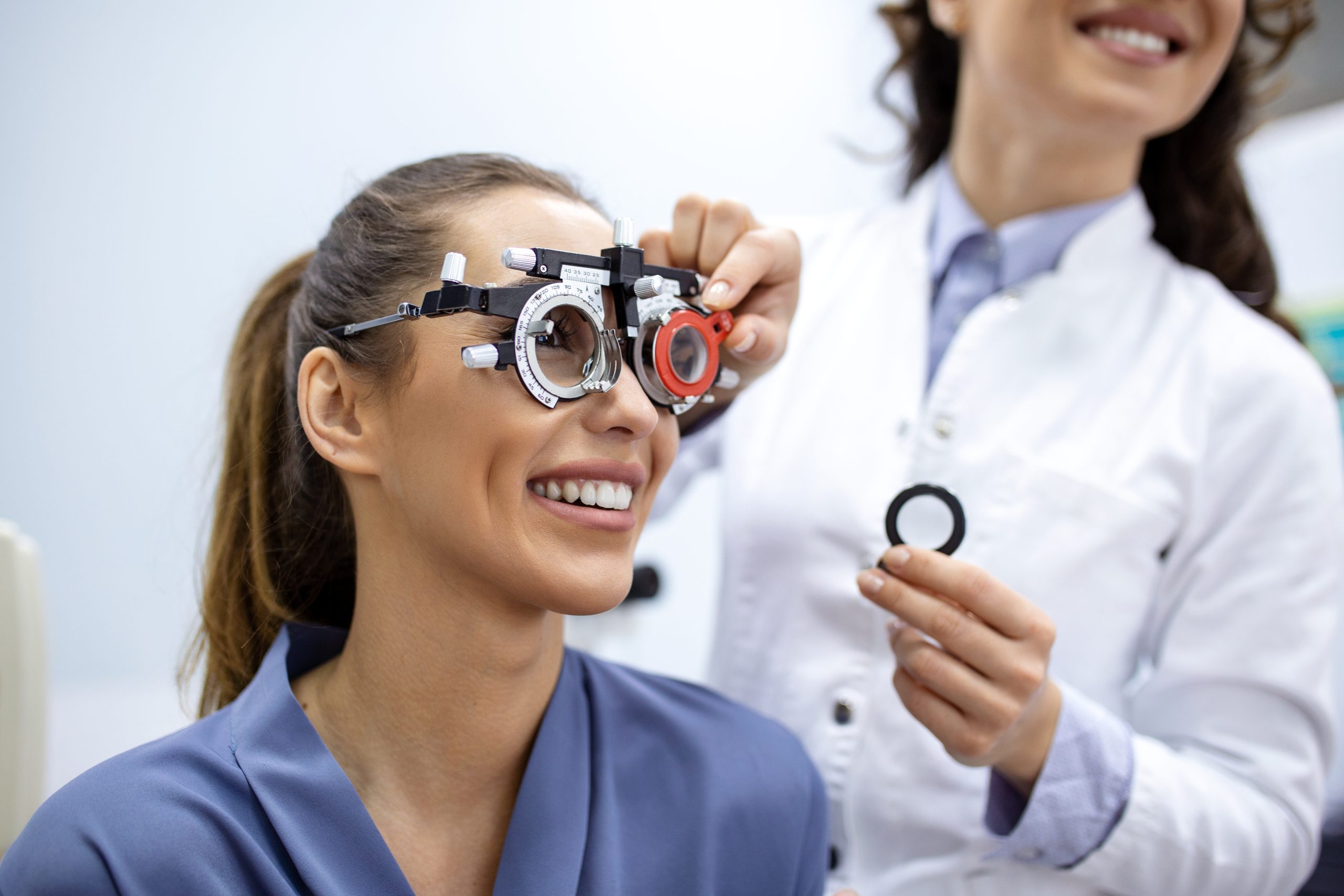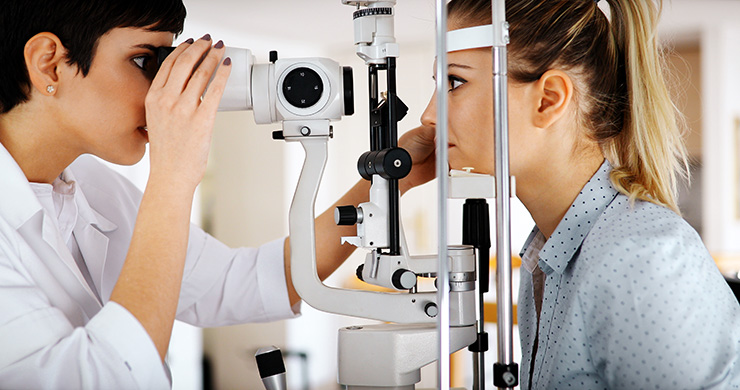Check Out the very best Optometrist Chino for Comprehensive Eye Care
Wiki Article
Exploring the current Technical Improvements in Optometry and What They Mean for Optometrists
From the accuracy of Optical Comprehensibility Tomography to the nuanced insights offered by AI-driven diagnostic devices, these innovations are setting brand-new standards in individual analysis and therapy. As these improvements penetrate the technique, optometrists are faced with the obstacle of embracing these devices to boost client outcomes.Advancements in Diagnostic Tools
Advancing the area of optometry, developments in diagnostic devices have actually reinvented the method eye care specialists assess and detect ocular conditions and aesthetic disabilities. The past decade has witnessed significant technical innovations, allowing even more accurate and comprehensive assessments.Another trick advancement is the intro of innovative corneal topography systems, which map the surface area curvature of the cornea with precision. These devices are especially advantageous for fitting contact lenses and diagnosing corneal conditions. Digital retinal imaging has transformed conventional ophthalmoscopy, supplying comprehensive, scenic sights of the retina that facilitate detailed visual evaluations.
The advancement of wavefront aberrometry has likewise been important, enabling the analysis of refractive mistakes with unrivaled accuracy (Opticore Optometry). This modern technology aids in customizing corrective lenses and improving medical end results for refractive surgeries. Collectively, these diagnostic innovations encourage eye doctors to supply superior individual treatment, guaranteeing very early intervention and customized therapy methods, inevitably boosting visual health and wellness results
AI in Patient Management
Structure on the structure of cutting-edge analysis tools, the incorporation of expert system (AI) in client monitoring stands for a transformative jump for optometry. AI systems are significantly utilized to enhance efficiency, accuracy, and customization in client treatment. By examining large amounts of information, AI can determine patterns and forecast potential eye problems, allowing optometrists to customize treatments much more successfully. This capacity is crucial in taking care of chronic eye illness such as glaucoma and diabetic person retinopathy, where very early discovery and continual tracking are key.Additionally, AI-driven platforms assist in structured client communications and administrative processes. Automated scheduling, digital appointments, and customized follow-up strategies not only enhance patient complete satisfaction yet also maximize time administration for practitioners. These systems can triage individuals based upon the urgency of their conditions, ensuring that those in essential requirement obtain punctual interest.
Moreover, AI boosts decision-making by providing optometrists with evidence-based recommendations and therapy paths. By integrating data from digital health records, AI devices supply understandings that inform professional decisions, lowering the risk of mistakes and boosting patient outcomes. As AI remains to progress, its function in individual monitoring will likely expand, reshaping the landscape of optometric treatment.
Advancements in Retinal Imaging
In the world of optometry, retinal imaging has actually seen impressive technical advancements that are improving analysis abilities and individual treatment. Technologies such as Optical Coherence Tomography (OCT) and fundus photography have revolutionized how optometrists visualize and examine the retina. OCT, specifically, supplies high-resolution, cross-sectional pictures of the retina, permitting the detailed examination of its layers. Learn More This ability is very useful for very early discovery and monitoring of conditions like glaucoma, diabetic retinopathy, and age-related macular degeneration.Improved imaging techniques like OCT angiography are more refining analysis precision. Optometrist Chino. Such improvements facilitate the identification of min retinal modifications that can indicate illness progression.
Furthermore, improvements in expert system are enhancing retinal imaging by enabling automatic evaluation of large datasets. These systems aid eye doctors in identifying patterns a sign of pathology, therefore boosting diagnostic precision and performance. Jointly, these technologies are transforming retinal imaging into a foundation of modern-day eye care, boosting end results and expanding therapeutic opportunities.
Teleoptometry's Expanding Role
Teleoptometry is significantly ending up being a vital component of eye care, driven by innovations in electronic interaction and diagnostic devices. This is especially useful in underserved and country locations where accessibility to specialized eye treatment is often limited.The integration of man-made intelligence (AI) further boosts teleoptometry, making it possible for the evaluation of visual information and helping in the detection of eye problems such as glaucoma and diabetic retinopathy. AI-powered formulas can quickly interpret complicated imaging data, giving eye doctors with important understandings that boost scientific decision-making.
Moreover, teleoptometry supports connection of care through smooth combination with digital health and wellness documents (EHRs), permitting optometrists to keep extensive patient backgrounds. This makes sure that patients get regular and individualized treatment even when speaking with different experts.
Despite these benefits, challenges stay, consisting of guaranteeing data protection and handling individual assumptions. However, teleoptometry stands for a substantial stride towards more available, effective, and patient-centered eye care. As technology progresses, its duty is poised to expand further.

Future Patterns in Eye Treatment
A myriad of cutting-edge fads is readied to improve the future of eye care, driven by technical improvements and the advancing needs of individuals. One considerable pattern is the assimilation of click here to find out more expert system (AI) in diagnostics, which promises to improve the precision and effectiveness of eye evaluations. AI algorithms can examine vast amounts of data from retinal images, potentially spotting problems like diabetic person retinopathy and glaucoma earlier than traditional approaches.Moreover, customized medication is getting traction in optometry, with genetic testing educating customized treatment plans. This strategy aims to optimize individual end results by tailoring treatments to private hereditary profiles. Wearable modern technology, such as wise get in touch with lenses, is also on the perspective, using real-time monitoring of intraocular stress or glucose levels, hence offering continual insights into ocular and systemic health.
The fostering of enhanced reality (AR) and digital reality (VIRTUAL REALITY) in training and person education and learning is another arising pattern. These technologies offer immersive experiences that can boost understanding and abilities both for patients and eye doctors. As these trends advance, eye doctors must remain abreast of technical innovations to give innovative treatment, making sure enhanced patient results and complete satisfaction in the vibrant landscape of eye care.
Conclusion

Jointly, these analysis advancements empower eye doctors to supply exceptional person care, ensuring very early treatment and customized treatment strategies, eventually boosting visual health and wellness outcomes.

As these modern technologies continue to evolve, eye doctors have to adapt and incorporate them right into method, inevitably optimizing operations effectiveness and boosting the standard of eye care supplied to patients.
Report this wiki page